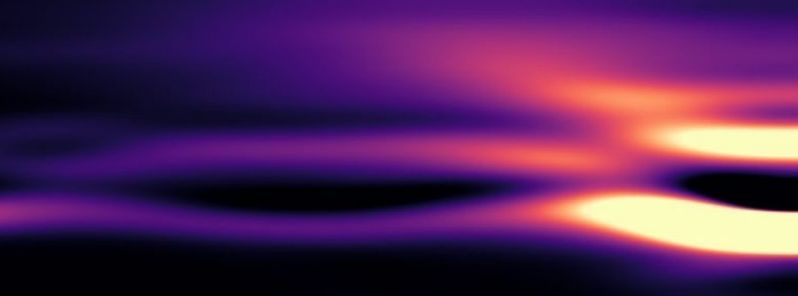Researchers find proof quantum particles can be virtually immortal

Researchers found that quasiparticles in quantum systems could be effectively immortal, as detailed in their study published in Nature Physics. These quantum particles, however, still decay but once they do, they are able to rebuild themselves back into existence– possibly to infinity.
In the macroscopic world, decay is relentless. Everything has an expiration date, even the universe itself will not last forever.
In the quantum realm, things behave in a way that they don't follow the same rules as the objects we see as the rules of quantum physics can get bizarre.
Quantum scientists discovered that while quasiparticles decay, they are also able to reorganize themselves again, thus, becoming virtually immortal.
"Until now, the assumption was that quasiparticles in interacting quantum systems decay after a certain time," said physicist Frank Pollman of the Technical University of Munich. "We now know that the opposite is the case: strong interactions can even stop decay entirely."
Quasiparticles are not literally particles, like the way we commonly think of them such as electrons and quarks. Rather, these are disturbances in solid, caused by electrical or magnetic forces that behave like particles collectively.
For example, phonons– the discrete units of vibrational energy that oscillate atoms in a crystal lattice– are typically classified as quasiparticles, as are polarons– electrons trapped in a lattice confined in a cloud of polarization.
Researchers involved with this study came up with numerical methods to determine the complex interactions of these quasiparticles. They ran simulations on a supercomputer to observe how the quasiparticles undergo decomposition.
"The result of the elaborate simulation: admittedly, quasiparticles do decay, however new, identical particle entities emerge from the debris," said study author and physicist Ruben Verresen of the Technical University of Munich and the Max Planck Institute for the Physics of Complex Systems.
"If this decay proceeds very quickly, an inverse reaction will occur after a certain time and the debris will converge again. This process can recur endlessly and a sustained oscillation between decay and rebirth emerges."
Researchers emphasized that it does not violate the second law of thermodynamics after all, which states that the total entropy of an isolated system can never lessen over time, and remains constant if and only if processes are reversible.
It's because the oscillation is a wave that is transformed into matter– this is covered under the quantum mechanical concept of the wave-particle duality.

The findings also solved some puzzles, such as the one about magnetic compound Ba3CoSb2O9. This compound was previously found to be unexpectedly stable. Now, it seems that the key might be the magnetic quasiparticles it contains which are called magnons. The simulation showed that they rearrange themselves after decay.
Another example is helium– it turns into a resistance-free fluid at absolute zero temperature. This strange property could be explained by the fact that helium is full of quasiparticles called rotons.
At this moment though, the study is only in the theoretical realm. But researchers believe that the insights on quasiparticle immortality could help in the development of useful quantum computers.
Reference
"Avoided quasiparticle decay from strong quantum interactions' – Verresen, R. et al – Nature Physics – DOI: 10.1038/s41567-019-0535-3
Abstract
The authors thank R. Coldea, S. Parameswaran and S. Chernyshev for discussions, and the latter for detailed comments on the manuscript. The authors also thank I. Khaymovich for pointing out the inspiring refs. 31,32. R.V. was supported by the German Research Foundation (DFG) through the Collaborative Research Center SFB 1143. F.P. acknowledges support from DFG Research Unit FOR 1807 through grant no. PO 1370/2-1, TRR80, Nanosystems Initiative Munich (NIM) by the German Excellence Initiative, the DFG under Germany’s Excellence Strategy EXC-2111-390814868, and the European Research Council (ERC) under the European Union’s Horizon 2020 research and innovation programme (grant agreement no. 771537). This research was supported in part by the National Science Foundation under grant no. NSF PHY-1748958 and by the Heising–Simons Foundation.
Featured image credit: Verresen, et al.

Commenting rules and guidelines
We value the thoughts and opinions of our readers and welcome healthy discussions on our website. In order to maintain a respectful and positive community, we ask that all commenters follow these rules.